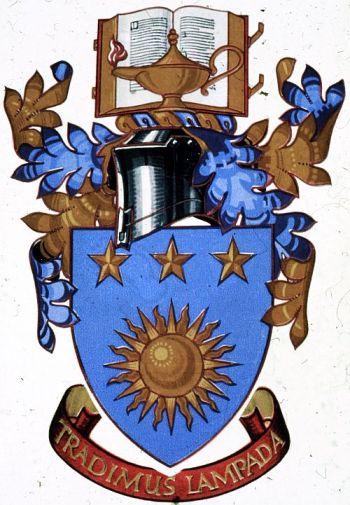Institution of Civil Engineers: Difference between revisions
Knorrepoes (talk | contribs) m (Text replacement - "{{uk}}↵↵''' {{uc:{{PAGENAME}}}} '''↵↵[[File:{{PAGENAME}}.jpg|center|Arms of {{PAGENAME}}]]↵↵===Official blazon===" to "{| class="wikitable" |- style="vertical-align:top;" |350 px|center|alt=Arms (crest) of {{PAGENAME}} | '''Institutional Heraldry of the World''' : * United Kingdom 60 px|right ** England<br><br> |} ") |
Knorrepoes (talk | contribs) m (Text replacement - "↵===Origin/meaning===" to "|} ===Origin/meaning===") |
||
| Line 20: | Line 20: | ||
'''Supporters''': Oa the dexter side a beaver and on the sinister a crane, both proper. <br> | '''Supporters''': Oa the dexter side a beaver and on the sinister a crane, both proper. <br> | ||
'''[[:Category:Mottoes all|Motto]]''': Scientia et ingenio | '''[[:Category:Mottoes all|Motto]]''': Scientia et ingenio | ||
|} | |||
===Origin/meaning=== | ===Origin/meaning=== | ||
Revision as of 11:23, 7 April 2023
|
Institutional Heraldry of the World :
|
| English |
Arms : Or, on a pale azure between two annulets in fesse sable, a thunderbolt between in chief a sun in splendour of the first and in base a fountain proper. |
Origin/meaning
The arms were officially granted on March 17, 1913. Crest and Supporters granted 31 December 1948.
The sun, thunderbolt and fountain symbolise the forces of heat, electricity and water. The Institution’s royal charter refers to civil engineering as the art of directing the great forces of power in nature for the use and convenience of man.
The annulets represent the science of mathematics used by civil engineers.
The Eddystone Lighthouse was used on the Institution’s first corporate seal after being granted its royal charter in 1828. It was the principal work of John Smeaton who was the first person to describe himself as a civil engineer.
The beaver was chosen because of its skill in the type of construction associated with civil engineering. The crane is a pun on the mechanical device widely used in civil engineering work.
Contact and Support
Partners:
Your logo here ?
Contact us
© since 1995, Heraldry of the World, Ralf Hartemink 
Index of the site
Literature : image from https://www.theheraldrysociety.com/; background from Estyn Williams










